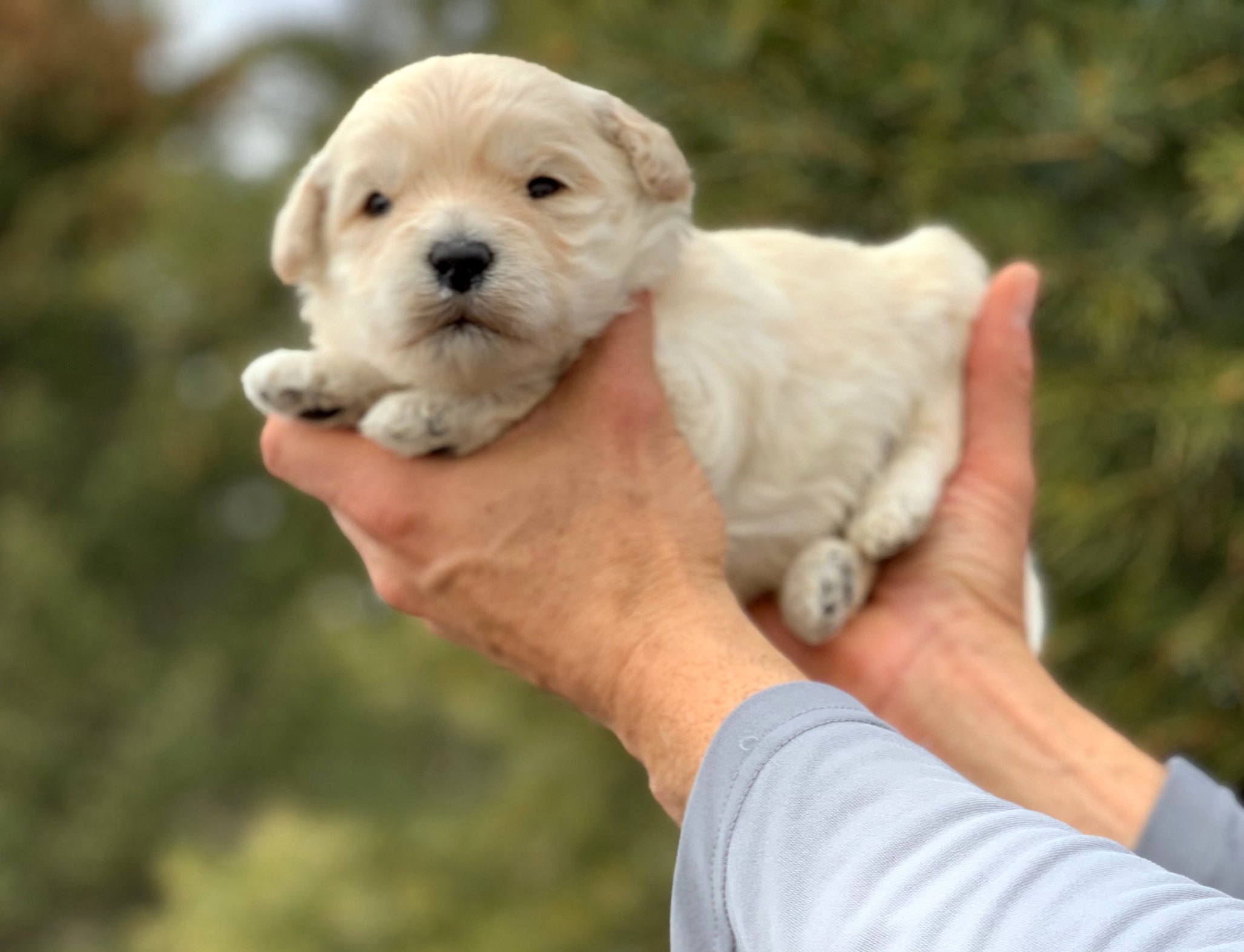“Cobber” is an Australian and New Zealand term for “mate” or “friend.” It makes sense, then, that Australian Cobberdogs are phenomenal companions and excellent therapy and assistance dogs.
Australian Cobberdogs have come to be a much-loved breed in households across the world. These mild-mannered and rather gentle canines are considered highly intelligent and subsequently easy to train. These specific traits are what make Australian Cobberdogs such great family and therapy dogs.
By nature, Australian Cobberdogs are trusting, loving animals and enjoy spending time around people and other pets. This makes them a great addition to any family with children.
They’re also bred to be asthma and allergy-friendly which helps those suffering from asthma to still enjoy the experience of a canine companion in the home without any health risks involved. The Australian Cobberdog coat has evolved to be mostly a fleece coat, which can be either curly, straight, or wavy, however, some are a combination of fleece and wool, giving them a thick, fluffy texture and when longer, beautiful long spiral curls. Their coats are also low to non-shedding which is a much-appreciated feature for those families who do not want to be constantly cleaning up hair off the floor and furniture and also makes these dogs extremely easy to care for and groom.
Their many unique characteristics make Australian Cobberdogs exceedingly appealing. Understanding where they have their origins makes them all the more lovable.
A Story That Began with a Labradoodle
Wally Conron is credited with breeding the first Labradoodle in 1989. This was accomplished by pairing the Standard Poodle and the Labrador Retriever over time. Conron’s ultimate goal was to bring a dog into the world that possessed a mild temperament and shed minimally, making for a hypoallergenic option for pet owners.
It didn’t take long for the popularity of Labradoodles to grow exponentially, to the point that Conron and many other breeders felt that, with respect to genetics, it was pushed too far. By the early 2000s, Australian dog breeder Rutland Manor began to consider ways to diversify the Labradoodle’s genetic line to improve upon certain features such as higher ear sets to reduce ear infections, a stockier build (unlike the poodle), and produce a new Cobberdog breed altogether which would improve upon its predecessor Australian labradoodle.
Distinguishing the Breed
Rutland Manor’s approach to improving on the original Labradoodle breed was quickly noticed by many, with the new breed taking the world by storm. The Australian Cobberdog breed was not just another Australian labradoodle, it was its own Breed that had risen from the ashes of the beloved Australian Labradoodle, the integrity of which unfortunately had been compromised for years through questionable and unethical breeding practices by too many seeking to capitalize on its popularity.
One of the most successful infusions done by Beverley Manners of Rutland Manor was to bring in the genetics linked to the champion Irish Soft-coated Wheaten lines that originated from Ireland. When this was done, the Australian Cobberdog was officially brought into this world.
These final genetic decisions are what give the Australian Cobberdog its distinctly high-set ears, stockier build, and boxy head. As a result, the breed is less prone to ear infections than Labradoodles or Australian Labradoodles.
While they tend to be confused, Australian Labradoodles and Australian Cobberdogs do have their similarities but in the end, they have different genetics that makes them distinct in every way.
The Australian Cobberdog is a pure breed in development by The Master Dog Breeders and Associates organization in Australia. This status-holding is important when it comes to protecting the integrity of the Australian Cobberdog breed well into the future.
Their efforts and recognition of the Australian Cobberdog are in an attempt to prevent unethical breeding practices and to keep unsanctioned infusions as things of the past.
If you’re interested in learning more about our amazing animals Contact Us Here!


